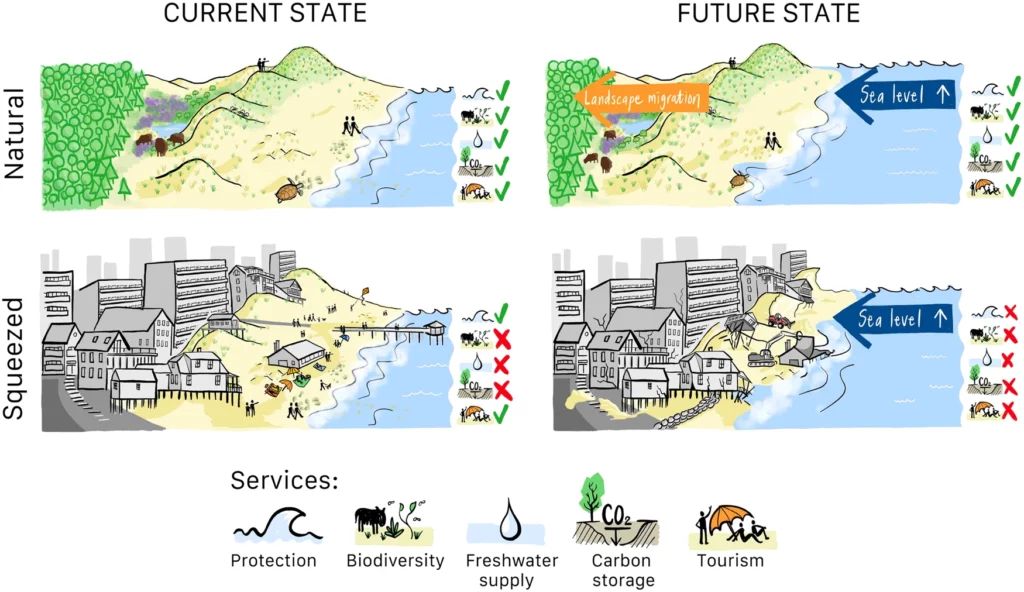Beaches and dunes are becoming trapped between rising seas and human infrastructure development, according to a new study. Researchers analyzed the proximity of human infrastructure to the world’s sandy shores and found that, on average, the nearest building or paved road is only 390 meters (0.24 mi) from the sea.

While the proximity to the beach might appear convenient for a leisurely day out, it poses significant challenges for safeguarding against rising sea levels, preserving drinking water resources, and maintaining biodiversity. Especially now amid the climate crisis, with forecasts of global sea level rise of up to six meters over the next 200 years.
“Infrastructure restricts the available space to accommodate coastal ecosystems and impedes cross-ecosystem processes through landscape fragmentation. The space reduction hampers sandy coasts and their habitats to adapt to sea level rise by landward retreat, a phenomenon called ‘coastal squeeze,” the researchers wrote.
Vital to society, beaches and dunes protect us from flooding, are a key source of drinking water and host numerous plant and animal species. They can fulfil all these functions if they are given sufficient space but not necessarily if dunes become too narrow. This is what’s happening now with infrastructure and rising sea levels.
The researchers mapped this coastal squeeze by combining previously recorded measurement data with Open Street Map data. They then measured the straight-line distance from the coastline to the nearest paved road or building and took this measurement for every kilometer along all the sandy beaches around the world.

Too close for comfort
These measurements showed that infrastructure is usually located very close to the sea. When dropped on a random beach, a person would need to walk just 390 meters on average to find a road or building. Over 30% of global sandy shores harbor a less than 100-meter infrastructure-free space, suggesting many buildings directly on the beach.
Infrastructure is generally closer to sandy shores in densely populated areas. The most affected countries are Japan, South Korea, Lebanon, Syria, Turkey, Italy, France, Spain and the US. They all rank in the top 20 of the most severely squeezed countries. At a continental level, the squeeze is most visible in the Americas, Europe and Asia.
In the future, the researchers forecast the problem is set to increase. Sea level rise will narrow the space between buildings and the sea even more. While in a natural situation beaches and dunes would migrate inland, buildings and roads hinder this. They expect that 23% to 30% of beaches will be washed away or drowned by 2100.
However, there’s still hope. The researchers found that when dune areas are given protected status, buildings and roads are four times more distant than in unprotected areas. Only 16% of the world’s sandy coasts are currently protected, which then indicates the importance of better-protecting beaches and dunes around the world.
The study was published in the journal Nature.









